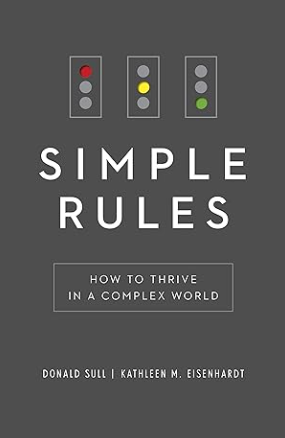Research is a broad ecosystem: All results are important!
Research is a complex ecosystem where all activities and results (in all fields) will be somehow connected, either directly or indirectly, to each other.

Research is a complex ecosystem where all activities and results (in all fields) will be somehow connected, either directly or indirectly, to each other.
Hence, we should not think that our findings will be not significant due to for example, our research filed is very niche and does not have a large community or due to any other reasons.
We have to think research in a broad perspective as an ecosystem.
In an ecosystem, let say in the environment we live in, all entities in our environment, that are people, trees, animal, river, buildings and other entities will affect each other. All products from the people, tree, animal and others will affect each individual entity. Even though, they are not directly related in their daily activities.

For example, the most obvious example is the relation between a bee and flower in the spring and summer periods. If we think about flowers, basically, the flowers are totally different entity with bees. However, the pollen produced by flower somehow useful for bee for them to produce honey.
Also, the bees, indirectly help the pollination process of the flowers. From the pollen stick on the bee’s leg, these pollens are flown by the bees to another flower so that the flowers grow into fruits and their reproductive mechanism can continue.
From this example, the bee’s activities that basically are meant for the bee community themselves, indirectly affect the flowers reproduction and fruit-growing mechanism.
Of course, there are many other examples on how a small thing that happen in an ecosystem can have a large impact (either negatively or positively) on the ecosystem in a near or long time period in the future.
That is why, developed countries do not hesitate to spend a lot of money to do various kind of research in various disciplines. Of course, not all this research will go to TRL 8 or 9 that are in mass-scale product.
But, all results from these researches will be accumulated to form a critical pool of knowledge from where many further products and important results can be obtained.
READ MORE: The most important tools for research

Many today technologies as the results of “unrelated” research results
History has proven that many today technologies in specific fields came from results of research in other disciplines.
Neural network
The obvious example is the deep neural network (DNN) technologies. This DNN technologies are now everywhere in our lives, from image recognition, natural language translation, recommendation system, search engine, voice recognition until the recent one, the bombshell of ChatGPT.
This DNN technologies are inspired from the finding of research on how brain works from the medical and phycological disciplines.
It is found that our brain contains billion or even more of neurons. Each neuron has input and output connections with a core processing cell. These billion of neurons in our brain receive, process and transmit electrical signals so that we can recognise image, perform specific tasks and any other activities.
These interconnected structures of neurons are then modelled mathematically and then implemented in a computer to simulate how a human brain works. Then, we get the DNN models with many variants to solve specific problems that require intelligence.
If, researcher in medical and psychological disciplines are not presenting their results on how a brain works, then we may not have DNN technologies (that is no ChatGPT) until today.
Polynomial theory
In early 20th centuries, a mathematician work on polynomial number theory. This theory was originally developed based on a curiosity without knowing what the application will be.
It turns out that, the polynomial number theory is instrumental in digital computing and processing. This theory explains how register states in digital computer work.
Error correction code in robust communication system benefits the results from polynomial number theory. One of the most famous and robust error correction code is TURBO code.
This TURBO code uses the property and operation of polynomial numbers to construct its internal states that describe how the TURBO code property and behaviour will be.
Another application of this theory is in the generation of pseudo-random (PRN) signal in global navigation satellite system(GNSS). PRN signal is a pseudo-noise signal with a unique identity and has a large auto-correlation value and zero cross-correlation value. In addition, this PRN code spread the spectrum of a GNSS baseband signal.
Nowadays, GNSS technologies, such as global positioning system (GPS) are significant in our daily life, for example to have a real-time google maps, GNSS signals are used to get the position of our car into the map.
Matrix algebra
Again, initially, mathematicians only study number and matrix as well as their property and operation out of curiosity.
From their results, we can utilise a matrix to represent data. Not only, the property of matrix and their operation can be used to extract information from data, but also, we can transform the data into other domains to understand more about the data.
One of the most used matrix algebra applications is principal component analysis (PCA). The method of PCA is used in many multidimensional (or multi-variate) data analyses.
With PCA analysis, we can extract which dimensions or variables contribute more to the variation of data. In other words, with PCA, we can find the most important variables in data.
PCA is one of the most important methods in data analytic.
The fundamental idea of PCA is the use of single value decomposition (SVD) matrix operation. This operation is purely a mathematical operation. But, the results of this method find it use in other fields, such as data analysis with many applications.
Nature-inspired engineered product
Nowadays, many products come from nature-inspired designs.
For example, currently, robotics technology is going toward several trends that are inspired by nature, such as snake robotics, micro-robotics and swarm robotics.
These trends are inspired by the results of research in biology, about the anatomy of snakes, how snakes move, the anatomy of small animals and other findings in biology.
That is, the research results in biology can be applied to research in mechanics and robotics.
When we look at a glance, there is no relation between biology and robotics. However, since all results in different disciplines are related to each other, there always relations among all disciplines.
That is why, nowadays, a high impact research is interdisciplinary research where many experts form different fields work together.
READ MORE: Is research expensive?
- The Art of Creative Thinking - A book on how we can develop human creativity to transform the way we do research and any activities.
Many today technologies as the results of decade-long inventions
Many important technologies, that we use today, benefit from many old or classical research findings.
The inventors that produced those classical findings or results never thought that they research results will be used today or will find great applications in current time.
For example, GNSS technology, such as GPS and GALILEO, has found important uses in our daily life. When we drive, we use maps that can guide us to reach our destination. In finance, all financial transactions are time-stamped precisely from the atomic clock of GNSS satellites.
To be able to estimate position and time from GNSS satellites, one of information that we need to know is the orbit location of satellites when they transmit their GNSS signals.
To be able to estimate the satellites orbit positions, one of important information that we need to understand is the orbit model of satellite.
This orbit model study, especially for planetary motions, was firstly observed and studied by Johannes Kepler in 1619.
In 1619, the results for the Keppler’s study seems to be not useful at all as people at that time did not deal with global positioning or precise timing.
But, after hundred years, Keppler’s results contribute to many instrumental technologies in our daily life, such as GNSS.
Of course, to determine a satellite orbits, the other research results from Newton in 1687 and Brahe in 1601 and from other researchers are required. Those results are found in several centuries ago (17thcentury) but find their use in the 20th century.
READ MORE: Research is like a puzzle: Start from anywhere to reach a goal
- The Art of Creative Thinking - A book on how we can develop human creativity to transform the way we do research and any activities.
Conclusion
In this post, the importance of any types of research activities and results are explained.
Some people may find or feel that their research is not get proper attentions or appreciations due to, for example, their field is very niche or narrow or their results are not phenomenal or excellent.
In fact, we should not think like that. Instead, we have to put in our mind that research is a large ecosystem where all fields are somehow related directly or indirectly to each other. Every small result in a specific field may lead to a big result in another field or the small results can help to solve big problems in another filed.
Or maybe, the results that we think is small at the moment, may find it real use or implementation in many years to come.
The main message is that we should keep our motivation and spirit in doing research or development activities. By valuing small results that we got, we can reward ourselves and continue forward to find or to obtain more results.
We should never under-estimate or under-appreciate our research field and results, no matter how small or narrow our field is or how small we think our result is.
Finally, we should appreciate all work and results from our and other people research activities. Because all of results are important. Maybe, the results will find clear implementation in many years to come or the results trigger or lead to another very important result in completely different fields.
You may find some interesting items by shopping here.
